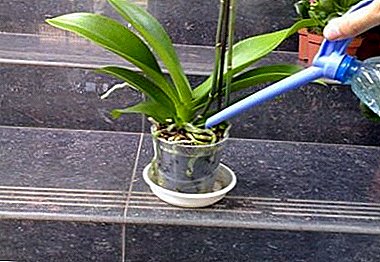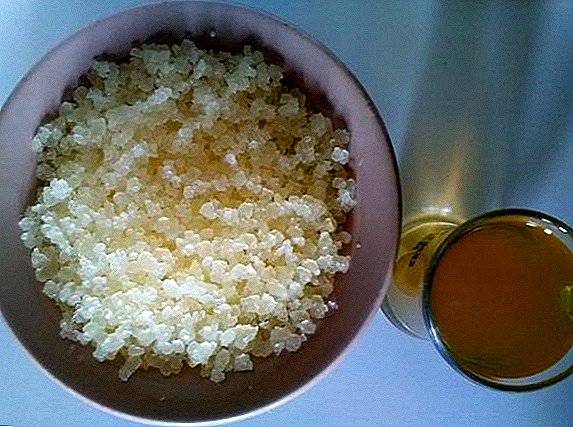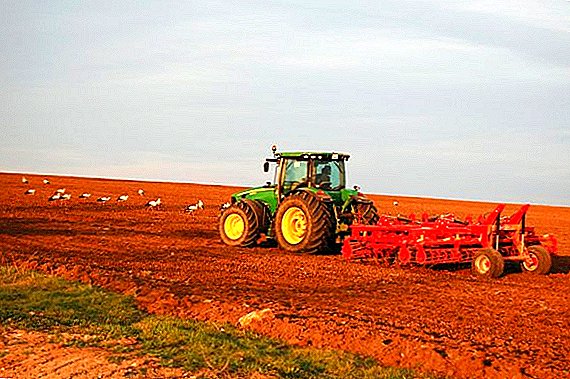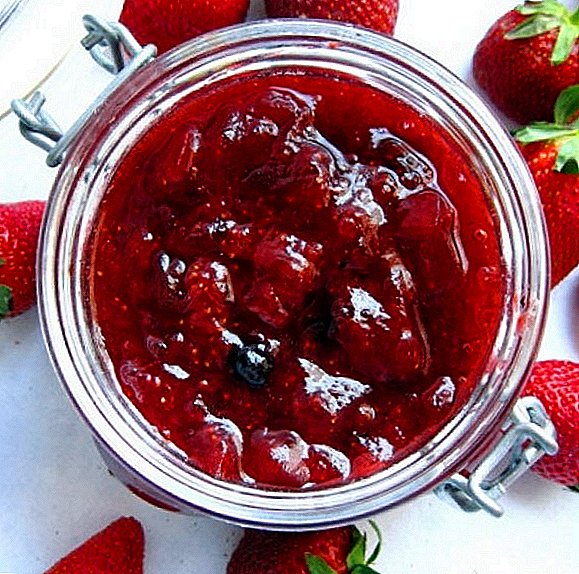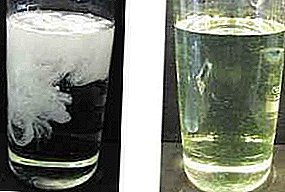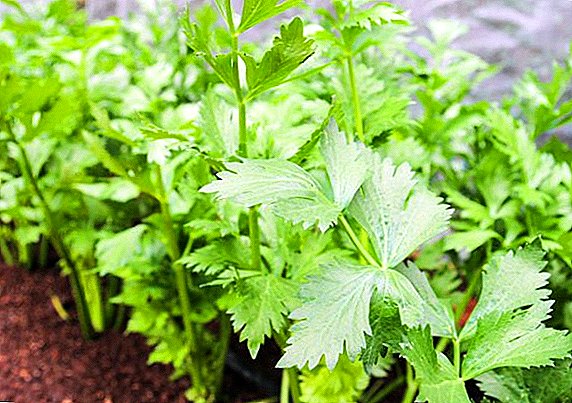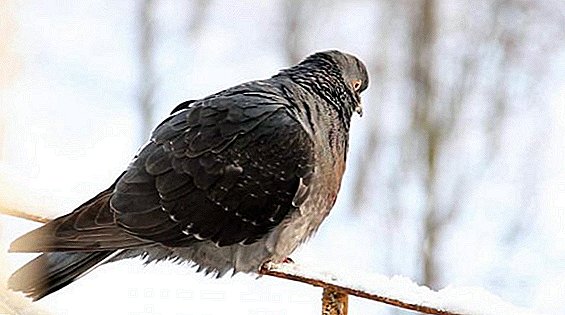 It is known that chicken is considered a poultry, the main purpose of which, in addition to being a source of meat, is considered to be their main product, eggs. Every farmer creates all conditions for his hens to justify this goal with their productivity. But there are cases when completely healthy chickens unreasonably and at the same time stopped to rush. In this article we will talk in detail about the causes of this phenomenon.
It is known that chicken is considered a poultry, the main purpose of which, in addition to being a source of meat, is considered to be their main product, eggs. Every farmer creates all conditions for his hens to justify this goal with their productivity. But there are cases when completely healthy chickens unreasonably and at the same time stopped to rush. In this article we will talk in detail about the causes of this phenomenon.
Conditions of detention
In order not to be disappointed in the future and not to incur losses in the future, you should take care of the conditions of your chickens.  First of all they consist in properly organized house:
First of all they consist in properly organized house:
- To keep the chickens should be allocated on an elevated site (to avoid flooding) a separate room with the presence of a place for walking.
- Room dimensions must be calculated in advance. The optimum is considered to be a room with a calculation for 1 square meter of 5 layers.
- Maintain daylight chickens, it can not be less than 14 hours. Lighting in the hen house in the summer can provide large windows or vents, and in the winter it is necessary to organize additional lighting. A short daylight hours will also affect the behavior of the chicken: the hens become lethargic and sedentary, and as a result, the productivity decreases.
Important! Include additional lighting in the house can only after chickens molt.
- Ensure the absence of temperature fluctuations in the hen house. To maintain optimum air temperature, the ceiling of the chicken coop should not exceed 1.8 meters. The presence of windows, vents or hoods will allow air not to stagnate in the room, the main thing is to avoid drafts. Building a door-manhole (no more than 35 cm) will help to keep warm in the house in wintertime for unhindered exit of chickens to the paddock.

- If possible, for the comfort of laying hens in the winter time it is necessary to provide for additional heating of the room.
- The floor in the hen house is best covered with bedding. For these purposes, sawdust, hay, straw or dry leaves are suitable. Such a litter will help to keep warm and avoid additional heating in the winter. The thickness of the litter should be at least 50 cm.
- Build perches on the lighted side of the house at a height of not more than 1.2 m, made of wooden bars 4-6 cm in diameter. The crossbar perches are better placed at a distance of at least 35 cm, at the rate of 20 cm of the required area per hen.
- To build nests on the darkened side of the house (at the rate of 1 nest for 5 chickens), connected in blocks at a small elevation. Nests are covered with straw, hay and sawdust.

- Set in the hen house and on the walking area of the feeder. Under the feeders are meant narrow long boxes, the capacity of which may vary depending on the number of chickens. So, for the prevention of fights on each chicken requires 10-15 cm feeder. Also, the placement of the feeder is not a small elevation, it will not allow chickens to get into the trough with the whole body and restrict access to food for other individuals.
- Ensure the presence of drinkers in the hen house and on the walking area, the optimal capacity - 5-6 liters. The hens especially drink a lot before bedtime and after a laid egg.
- Maintaining a certain hygiene in the house and the surrounding area. By hygiene is meant the timely replacement of the litter, the periodic cleaning of the litter and the regular cleaning of the drinkers.

Little place in the hen house
Hens do not like tightness, therefore, with a high density of individuals, egg production is significantly reduced.
With proper organization of living conditions, in particular, calculations of the size of the room (for 1 square meter - 5 chickens) and equipment of a sufficient number of nests (for 5 chickens 1 nest), the farmer will not face such a problem.
We advise you to familiarize yourself with meat and egg breeds and crosses of chickens: Maran, Amrox, Brown Braun, Redbro, Viandot, Firello, Rhode Island.
Poor nutrition
The ability to egg production directly affects the nutrition of chickens. Poor nutrition is becoming the main reason that the chicken carries eggs without shell.  In general, the feeding process is very simple, but for balance and nutritional value it is worth thinking a little about the ration of the hens.
In general, the feeding process is very simple, but for balance and nutritional value it is worth thinking a little about the ration of the hens.
Balanced daily ration, based on one layer, consists of:
- 120 g of a mixture of grain: corn, wheat, barley, oats (as a percentage of 4: 2: 2: 3);
- 100 g of boiled potatoes;
- 30 g of mash (boiled or steamed crushed mixture of grain and compound feed);
- 3 g of chalk;
- 7 g of sunflower oil cake;
- 1 g baker's yeast;
- 2 g of bone meal;
- 30 g of crushed greens;
- 50 mg of salt;
- 3 g of chalk;
- 5 g of shell rock.
The presence of chalk, shell rock and bone meal in the diet on a permanent basis will have a beneficial effect on the structure of the eggshell. You can use additional feed if the bird was not on the run. Fresh greens, grass or tops are used as complementary foods.
Important! In order to avoid diseases, chickens are forbidden to give food with obvious signs of moldy or with manifestations of the fermentation process.
In winter, you can add hay harvested in summer to your diet.
Feeding chickens is necessary twice a day. Feeding will be optimal:
- in the morning more juicy food;
- in the afternoon - dry cereal mixture.
Do not give food in excess or in very small quantities, it will affect productivity. The fact that chickens do not expect the next distribution of feed, is considered a sign of satiety.  The quality of carrying eggs affects the lack of minerals and vitamins in solid food. Calcium, phosphorus and vitamins supplements will help improve it in time. Buy additional premixes, amino acids and vitamins, specially created for poultry, it is possible in veterinary clinics.
The quality of carrying eggs affects the lack of minerals and vitamins in solid food. Calcium, phosphorus and vitamins supplements will help improve it in time. Buy additional premixes, amino acids and vitamins, specially created for poultry, it is possible in veterinary clinics.
Important! In the diet of chickens, you can add sand. Birds do not have teeth and the sand will take part in the process of digestion, it will help to grind food and will come out naturally in its original form.
Diseases
Poultry farmers may experience situations where, for some unknown reason, in the summer chickens for some reason stopped laying eggs. And the cause may be different diseases of layers:
- Noncommunicable diseases. For example, inflammation of the oviduct and yolk peritonitis, ovariitis, salpingitis, bronchopneumonia, intestinal flu.
- Infectious diseases. For example, pullorosis-typhus, colibacteriosis and prostogonymoz.
- Viral diseases. These can be bird flu, Newcastle disease (pseudo-pills), chicken pox, tuberculosis, etc.
 The main symptom of any disease of the hen is its lethargy, inactivity and lack of appetite. Additional symptoms are diarrhea, ruffled feathers, aggressiveness.
The main symptom of any disease of the hen is its lethargy, inactivity and lack of appetite. Additional symptoms are diarrhea, ruffled feathers, aggressiveness.
Sources of disease can be pigeons and crows, which often fly into the territory of an uncovered house, or if the bird is kept in free range.
Timely vaccinations and timely deposition from the main flock of diseased birds will help minimize the spread of disease. At the time of jigging sick chickens need to organize additional care, good and high-quality food.
Important! Some diseases of the chicken can be very dangerous for humans. For example, bird flu or tuberculosis.
The presence in the hen house of a box with a mixture of ashes, sand and clay in equal quantities will serve as prevention of some diseases of the bird: such as ticks, fleas, lamb.
Bad cock
The performance of unfertilized eggs (lack of breeding) the presence of a rooster does not affect, but its availability affects the usefulness of the herd. The thing is that the hens obey the rooster implicitly. With a poor and weak rooster, a certain disorder is formed in the herd.  The hens obey the rooster implicitly, and a good rooster always keeps the flock together and makes sure that everyone has enough space at the feeders and in the nests.
The hens obey the rooster implicitly, and a good rooster always keeps the flock together and makes sure that everyone has enough space at the feeders and in the nests.
Did you know? A hen lays eggs only in the light, if the time of carrying comes in the dark time of the day - the hen will wait until the onset of daylight or the light.
Age
The productive age comes 4.5 months later. A sign that the hen is already ready for laying is the presence of a well-developed red ridge.
It is possible to check the readiness for laying in the following way: pullet should be turned over onto the back and run with fingers along the sternum to the lower abdomen. If the finger deepens completely between the felt foreheads, in 4 weeks the pullet will be ready for roost.
But too early start in the clutch and high productivity of young stock will directly affect the decrease in egg production. As a result, several months after the launch, situations arise when chick pullets do not rush, and farmers do not always understand what needs to be done in such situations.  To solve the problem you need to give the chicken time to recover. Regular supplements can help rejuvenate:
To solve the problem you need to give the chicken time to recover. Regular supplements can help rejuvenate:
- Vitamin A: found in carrots, alfalfa, clover leaves, grass meal, fish oil;
- Vitamin B: found in feed and baker's yeast, bran, fish meal;
- Vitamin D: Contained in fish oil, hay meal and irradiated yeast
- Vitamin E: found in the leaves of lettuce, germinated wheat seeds, peas, grass meal.
The productive age of layers is up to 2 years.
Did you know? With each subsequent year of life, the productivity of the chicken is reduced by 15-20%.
Periodically, poultry farmers should conduct an audit in the poultry house and in time to replenish the herd pullets. 
Stress and Fatigue
Stress and fatigue affect nutritional absorption.
Chickens are very shy and cautious. They are very sensitive to any changes in your lifestyle:
- noise and loud sounds lead to frustration and make the herd nervous. The appearance of a new rooster or young hen in a flock also frightens them;
- the cause of stress can be a dramatic change in the diet of the hens;
- getting used to a certain kind of food, it is very difficult for a chicken to take a new diet;
- layers like stability, so a change in the amount of food offered (up or down) will also leave an imprint on the tip of the eggs;
- a change in walking position can also lead to some disturbances in the herd.
To get out of a stressful situation, chickens need time to adapt to new conditions. As a rule, adaptation occurs within a week.
Helping to cope with the experiences of chickens faster will help this way: dilute 20 ml of apple cider vinegar in a liter of water and serve it to the bird throughout the week. 
Other laying
Often situations arise for the poultry farmers when the layer suddenly ceases to run, and as a result it turns out that the place of laying has changed. There are several reasons for this:
- sharp temperature drop. For example, in the winter time, the chicken became cold in the same place, and she found a place warmer and without drafts. Or, on the contrary, in the hot period of summertime, the chicken found a spot in the shade;
- changing schooling positions in the hen house. Perhaps the hen is oppressed by the older or younger individual. This hierarchy disappears if there is enough food and no one has to fight for it;
- A peculiar choice of chicken regarding comfort conditions. So, if it is convenient for a hen to nest in a certain place, then the eggs will always be located there by the farmer.
Important! Tennis balls as fake eggs in place of previous clutches will help to return the "attractiveness" of the hen's roost.
Inattention poultry farmers
Sometimes the answer to the question: why the hens of the laying hen have ceased, the usual carelessness of the poultry farmers may be. AND There may be several options:
AND There may be several options:
- a hen can lay its nest in a secluded place and lay eggs there. In time to notice somewhere a lost layer and find its laying will help simple observation of the owner;
- constant stressful situations due to improper location of the house (for example, close to the road with a large number of passing cars). Chickens love peace and quiet, even the sound of thunder or the sound of rain can affect their performance. The correct location of the house should be planned by the breeder;
- ordinary rats and crows love to feast on eggs and can steal them from the house. The task of the farmer is to eliminate the unhindered access of the “predators” to the hen house. This is ensured by the fence of the place of walking with a dense fence, it will not be superfluous to cover the place of walking with a net.
With the farmer's due attention to poultry, productivity will always remain high. The proper organization of the house, a full-fledged diet with a sufficient amount of proteins, fats, carbohydrates and vitamins with minerals, the young age of layers and the absence of stress and excitement in the bird are an important component of the high-performance chicken. The absence of eggs is not a reason for panic, it is a reason to review the conditions of your chickens.



